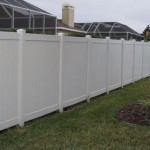How to Install a Fence Straight Using a String Line
A straight, level fence doesn’t happen by accident—it’s the result of precise planning and careful installation. One of the simplest yet most powerful tools for ensuring accuracy is the humble string line.
String lines have been used for thousands of years, dating back to ancient civilizations. The Ancient Egyptians used them to align the massive stones of the pyramids. Ancient Romans and Greeks relied on them to construct roads, aqueducts, and monumental architecture. Today, this same principle remains essential for projects like building fences, patios, walls, and decks.
In this guide from Buy Direct Vinyl Fence, we’ll show you exactly how to use a string line to install a fence straight, along with professional tips to make the job easier and more precise.
Why a String Line Matters in Fence Installation
A string line acts as a visual and physical guide, ensuring your fence posts and panels align perfectly from one end to the other. Without it, even a small misalignment in the early stages can throw off the entire fence, making it look crooked and unprofessional. Using a string line helps you:- Keep posts aligned in a straight row
- Maintain consistent height across all posts
- Reduce costly mistakes and rework
- Achieve a professional-quality finish
What You Need for a String Line Setup
Before you start, gather the right tools and materials:- String line or mason’s line – Nylon or polyester is best for durability and minimal stretch
- Stakes – Wood or metal stakes work well for securing your line
- Line level – Optional, but helpful for ensuring horizontal accuracy
- Hammer or mallet – For driving stakes into the ground
Step-by-Step: How to Use a String Line for Fence Installation
Follow these steps to ensure your fence runs straight and level from start to finish.1. Mark Your Endpoints
Identify and clearly mark the start and end points of your fence line. These will usually be the locations of your first and last fence posts.2. Drive Stakes
Use a hammer or mallet to drive stakes firmly into the ground at each endpoint. Make sure they are stable, as they’ll be holding your string line under tension.3. Tie the String Line
Attach one end of the string tightly to the first stake at your desired height. Pull the string taut to the second stake and tie it off securely. The line should be completely taut—no sagging. Pro Tip: For the best results, set up two string lines—one for the bottom of the fence and one for the top. This ensures consistent alignment vertically and horizontally.4. Check for Level
- Install your first and last posts in the run.
- Tie one end of the top string line about an inch from the top of the first post. Pull it tight to the last post, tying it about an inch from the top there as well.
- This is your horizontal work line. Adjust the middle posts so the top of each is about an inch below the string, ensuring a consistent, level line across your fence.
5. Use the Line as Your Guide
- When placing each post, ensure the edges line up with both the top and bottom string lines.
- Avoid pressing posts into the string, as this will move it out of alignment—just let them lightly touch the line for reference.
Professional Tips for Perfect String Line Work
- For long distances: Use batter boards (horizontal boards on stakes) instead of just stakes. This allows you to adjust the string’s height without moving the stakes.
- Multiple reference lines: Use different colored string or stagger heights to avoid confusion.
- Maintain tension: Always recheck tension and level before setting posts permanently. A slack string can throw off your entire project.
- Consider site slope: If your yard isn’t level, decide whether your fence will step down or follow the slope, and adjust string placement accordingly.
Common Mistakes to Avoid
- Not checking for level: Even if the string is straight, your posts can still be uneven without using a line level or careful measurements.
- Using cheap string: Cotton twine can stretch and sag; use high-quality mason’s line.
- Skipping rechecks: Always check alignment before concrete sets—small adjustments early can prevent big problems later.

